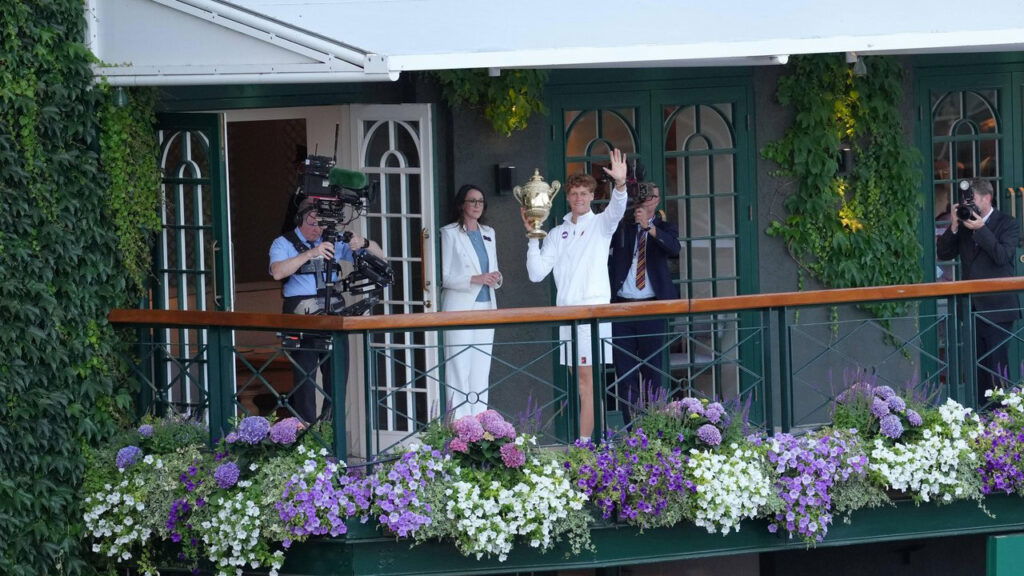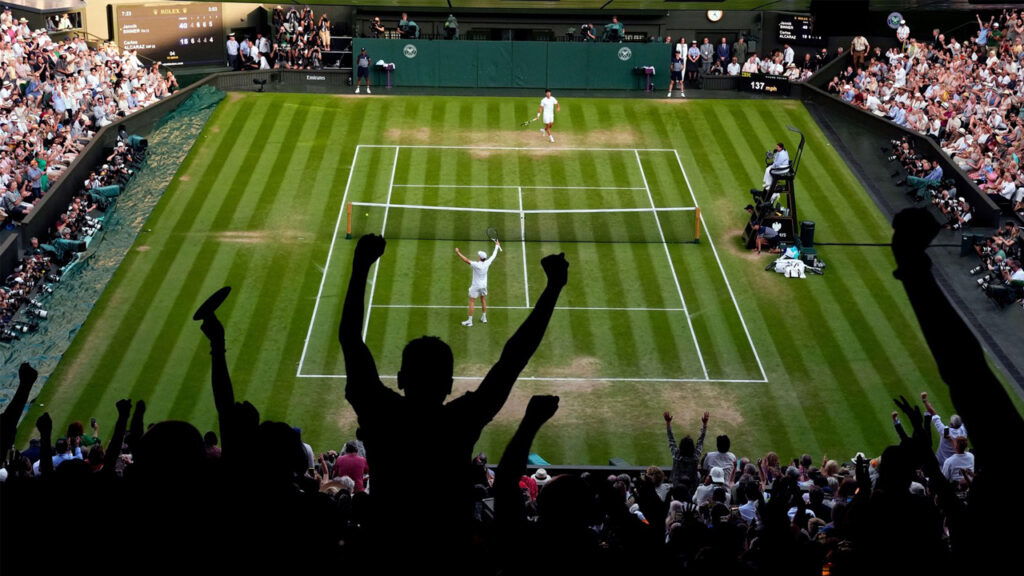There are very few global sporting events that can match the history and pedigree of The Championships, Wimbledon. The All England Lawn Tennis & Croquet Club’s (AELTC) annual event will be 150 years old in two years’ time, and our specialist camera division will be celebrating an unbroken quarter of a century of involvement with The Championships itself next year.
In 2001, we supplied the baseline track system and a single camera for Centre Court coverage. This year we supplied 44 remote camera systems on a typical day to Wimbledon Broadcast Services, which has been the host broadcaster since 2018, with Gravity Media specialist RF division provided exclusive RF cameras throughout the grounds. The cameras encompassed everything from compact rail systems to PTZ cameras, to robotic heads, to specialist units mounted on the Umpires Chair on the show courts, to a special gimbal-mounted unit on a hoist that you would more typically find on a helicopter. And they captured everything from close-up tennis action to press room coverage to beauty shots of the Wimbledon grounds from early in the morning to late – sometimes very late – at night.
In short it is the biggest annual project we get involved in as far as the amount and sheer variety of kit that we supply at an event. All in all, it takes around 100 crew days spread over an 18-day period to rig all the cameras. Only the Olympics is a bigger reoccurring project, and that only happens once every two years, not every year in SW19.
A HISTORY OF INNOVATION
WBS has an excellent track record of innovation when it comes to mounting the annual two-week coverage of The Championships. In 1967, Wimbledon provided the first ever colour broadcast in Britain, and recently WBS has helped pioneer remote production by providing simultaneous IP feeds to Rights Holders, been an enthusiastic early mover in ramping up fan engagement via expanded online coverage, created hugely successful dedicated apps, and more. Its use of specialist cameras is part of this overall heritage, and the organisation has come a long way since that initial railcam deployment on Centre Court 24 years ago.
One of the unique aspects of Wimbledon is that the built environment is very much a part of the whole event, and a lot of thought and effort has gone in over the years to make sure that any new cameras introduced are as unobtrusive as possible, as well as minimising seat kill. For example, the pill box style openings on the northern baselines on both Centre Court and Court One are custom-built hide structures that house rail cameras. These take three people a couple of days to build each.
Last year we introduced a new flown rail onto Centre Court to provide an additional moving angle high up in the back of the court. This was a complicated project to install and required close liaison with the AELTC but shows how the camera positions can evolve. It was originally envisaged as purely a beauty shot – Wimbledon is unusual in the number of beautycams we run throughout the fortnight, 16 this year – but we noticed directors cutting to the flown rail shots more and more in-between rallies and integrating them into the overall coverage of the actual matches. As a result, we upgraded the system for this year with improved lens stability.

There was also bespoke camera mounts on the Umpire’s Chairs on the two main courts (redesigned after the chairs were changed in 2023) plus the NetCam, developed in-house and mounted on the centre strap of the net capturing both players, plus numerous remotes positioned all around the site.
The majority of these remotes are our own self-developed SMARThead™ systems. As well as being dotted around the main courts, on the outside courts we rig five of them in Camera 1 positions two weeks before play starts. These need to be perfectly rigged, aligned, and weatherproofed from the start, as any adjustments made during The Championships require driving a cherry picker through the site to the camera and then being off-site again by 9am, and we avoid doing this as much as possible.
The robotic hoist cam is worth mentioning too. By using the sort of stabilised gimbal that you would usually find on a helicopter, we can use the full length of the lens and can zoom in tight onto anything of interest without any image shake. It can also stay aloft all day, even in adverse weather (the last dry event was in 2019, and there have only been eight tournaments without rain interruptions in the past 100 years), providing iconic images from across the grounds and of its 42,000 daily spectators.
This year there were 1500 hours of match footage captured alone, and many more hours from the beauty cameras and practice courts. WBS started providing a live behind-the-scenes feed to Rights Holders in 2023, and this necessitated us adding additional SMARThead™ positions; showing the arrivals journey from the new Somerset Road player’s entrance through a tunnel under the road into the club, and three more located in exclusive, usually hidden areas such as the Players Lawn and the entrance to The Championships dressing room – which is one of the few areas where our cameras do not venture.
CAPTURING THE CHAMPION’S WALK
In terms of RF, Wimbledon is a complex job. It’s a large site to be running wireless cameras on, but given the public access to most of it – over half a million spectators over the fortnight – and the unique ambience of the environment, RF cameras are an important alternative to yet more cable runs. Our specialist RF division installs up to 40 antennas across the site, allowing 16 broadcast cameras to roam all across the grounds. In recent years, such has been the demand we have maxed out the 2 GHz spectrum, and had to switch some units over to 7 GHz.
As well as the camera positions and the camera technology, over the years the RF has evolved too. More antennas have been added to ensure the Rights Holders can get the coverage they want from the areas they want, especially the practice courts. More data transmitters have also been added to ensure camera control works reliably everywhere.

One of the benefits of having a multi-year supply contract with a project of this nature is that you can invest properly to improve the coverage at key areas. This has come into focus in recent years thanks to the unique broadcasting challenge of the Walk of Champions. This consists of live Steadicam footage of the players exiting their dressing rooms and walking through the AELTC buildings to the Court itself before the Final, then the winner ascending to the balcony afterward. These paths follow a tortuous route through the buildings which was always an RF challenge for live broadcasting.
In recent years our long-term relationship with The Championships and WBS has enabled us to place antennas in the ceiling voids of the corridors and elsewhere along the route. These are disguised in the false ceiling so that they don’t detract from the look and feel of the Wimbledon environment and are a vital component in providing this one-of-a-kind footage to the live audience around the world.
And there are always a lot of people watching. Through 39 separate broadcast agreements, in 2025 The Championships was transmitted to over 220 territories around the world. Wimbledon says that because of the overlap of terrestrial, cable, satellite and internet streaming transmissions, it is impossible to calculate exact figures of the number of people who follow The Championships each year; but it is safe to say that it is seen by more people throughout the world than any other tennis tournament.
We’re delighted to be a part of that and, as the Championships have ended and the winners crowned, the Gravity Media specialist teams are already hard at work at plans for 2026 and beyond.
Watch this space…

